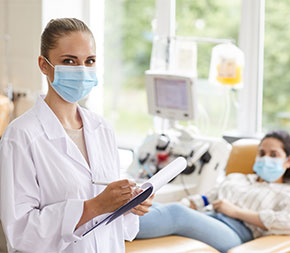Not known Facts About Northeast Medical Institute - New Haven Campus Phlebotomy Course & Cna Class
Not known Facts About Northeast Medical Institute - New Haven Campus Phlebotomy Course & Cna Class
Blog Article
Northeast Medical Institute - New Haven Campus Phlebotomy Course & Cna Class for Dummies
Table of ContentsLittle Known Questions About Northeast Medical Institute - New Haven Campus Phlebotomy Course & Cna Class.The 7-Second Trick For Northeast Medical Institute - New Haven Campus Phlebotomy Course & Cna ClassNortheast Medical Institute - New Haven Campus Phlebotomy Course & Cna Class Can Be Fun For AnyoneNortheast Medical Institute - New Haven Campus Phlebotomy Course & Cna Class Can Be Fun For AnyoneThe smart Trick of Northeast Medical Institute - New Haven Campus Phlebotomy Course & Cna Class That Nobody is Talking AboutRumored Buzz on Northeast Medical Institute - New Haven Campus Phlebotomy Course & Cna Class
Nevertheless, the usage of such devices need to be accompanied by various other infection prevention and control practices, and training in their usage. Not all safety devices are appropriate to phlebotomy. Before choosing a safety-engineered tool, users must thoroughly explore readily available devices to establish their suitable usage, compatibility with existing phlebotomy techniques, and efficacy in shielding team and clients (12, 33).For setups with low sources, cost is a motoring element in purchase of safety-engineered tools - CNA Training. Where safety-engineered devices are not offered, competent use a needle and syringe is acceptable. Accidental exposure and details info concerning an occurrence should be videotaped in a register. Assistance solutions need to be promoted for those who go through accidental direct exposure.
In the blood-sampling room for an outpatient department or facility, give a comfy reclining sofa with an arm remainder.
6 Easy Facts About Northeast Medical Institute - New Haven Campus Phlebotomy Course & Cna Class Described
Make certain that the indications for blood tasting are plainly specified, either in a written protocol or in documented instructions (e.g. in a lab type). At all times, comply with the strategies for infection prevention and control noted in Table 2.2. Infection prevention and control practices. Accumulate all the devices required for the treatment and place it within secure and easy reach on a tray or cart, making certain that all the products are plainly visible.
Present on your own to the patient, and ask the patient to state their complete name. Examine that the lab type matches the client's identity (i.e. match the individual's information with the research laboratory form, to guarantee precise recognition).
Make the client comfy in a supine position (when possible). Area a tidy paper or towel under the individual's arm. Go over the examination to be executed (see Annex F) and get spoken approval. The person has a right to reject a test at any moment before the blood tasting, so it is very important to make certain that the person has actually comprehended the procedure.
Some Ideas on Northeast Medical Institute - New Haven Campus Phlebotomy Course & Cna Class You Need To Know
Prolong the patient's arm and examine the antecubital fossa or lower arm. Locate a capillary of an excellent size that is visible, straight and clear.
DO NOT place the needle where veins are diverting, since this enhances the possibility of a haematoma. The capillary ought to be visible without applying the tourniquet. Finding the vein will assist in figuring out the proper size of needle. check out here Use the tourniquet regarding 45 finger widths above the venepuncture website and re-examine the capillary.
Specimens from central lines carry a threat of contamination or incorrect laboratory examination results. It is acceptable, however not ideal, to attract blood specimens when very first presenting an in-dwelling venous tool, before attaching the cannula to the intravenous liquids.
Rumored Buzz on Northeast Medical Institute - New Haven Campus Phlebotomy Course & Cna Class
Permit the location to dry. Failing to enable adequate contact time enhances the danger of contamination. DO NOT touch the cleaned up site; particularly, DO NOT put a finger over the capillary to lead the shaft of the exposed needle. It the site is touched, repeat the sanitation. Perform venepuncture as follows.
Ask the person to develop a clenched fist so the blood vessels are more famous. Get in the blood vessel promptly at a 30 level angle or much less, and continue to introduce the needle along the vein at the easiest angle of access - CNA Courses. Once enough blood has actually been gathered, release the tourniquet prior to taking out the needle
All about Northeast Medical Institute - New Haven Campus Phlebotomy Course & Cna Class
Take out the needle delicately and apply gentle pressure to the website with a tidy gauze or dry cotton-wool ball. Ask the person to hold the gauze or cotton wool in place, with the arm prolonged and elevated. Ask the patient NOT to flex the arm, due to the fact that doing so triggers a haematoma.

Top Guidelines Of Northeast Medical Institute - New Haven Campus Phlebotomy Course & Cna Class
Where possible, maintain the tubes in a rack and relocate the shelf in the direction of you - https://www.artstation.com/marvingordon3/profile. If the example tube does not have a rubber stopper, inject incredibly slowly into the tube as reducing the stress and velocity made use of to move the specimen minimizes the risk of haemolysis.

Report this page